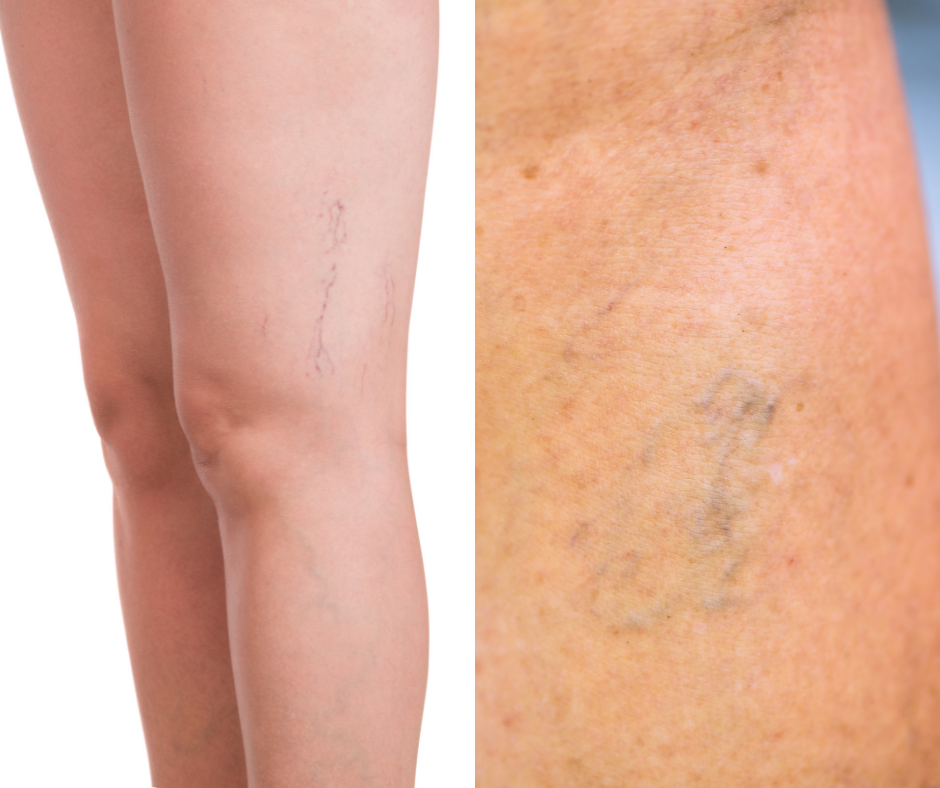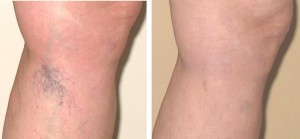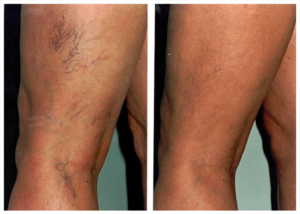Microsclerotherapy
What Causes Spider Veins on Legs?
Many factors increase a person’s chances of developing spider veins.
These include:
- Increasing age – as you get older, the valves in your veins may weaken and not work as well.
- Medical history – being born with weak vein valves increases your risk. Having family members with vein problems also increases your risk.
- Hormonal changes – These occur during puberty, pregnancy, and menopause. Taking birth control pills and other medicines containing oestrogen and progesterone also may contribute to the forming of spider veins.
- External Temperature – hot showers and baths. Heat causes blood vessels to dilate.
- Pregnancy – during pregnancy, there is a huge increase in the amount of blood in the body. This can cause veins to enlarge. The growing uterus also puts pressure on the veins. More spider veins usually appear with each additional pregnancy.
- Obesity – being overweight or obese can put extra pressure on your veins. This can lead to spider veins.
- Lack of movement – sitting or standing for a long time may force your veins to work harder to pump blood to your heart. This may be a bigger problem if you sit with your legs bent or crossed.
- Alcohol – alcohol increases blood pressure, causing veins to dilate. When the capillaries dilate repeatedly, they eventually lose their ability to contract. Eventually, they show up as broken blood vessels on the legs.

Thread Vein Removal: Legs
Spider veins are like varicose veins but smaller. They also are closer to the surface of the skin than varicose veins. Often, they are red or blue. They can look like tree branches or spider webs with their short, jagged lines. They can cover either a very small or very large area of skin.
Varicose veins are not treatable with Microsclerotherapy.
Microsclerotherapy is the most common treatment for spider veins. It is a safe and effective treatment when aftercare advice is followed. A solution called a sclerosing agent is injected into the veins to break down the vein wall, eliminating the unsightly appearance of the veins.
The same vein may need to be treated more than once. The number of treatments required varies from person to person and it’s rare for veins to reappear following treatment.
Treatments are usually done every 4 to 6 weeks. To date, the use of lasers to treat leg veins are not as effective as Microsclerotherapy.
Some of the benefits that you will notice almost immediately:
- Results after one treatment
- Minimal recovery time
- Preventative treatment to larger veins
- Clear skin



